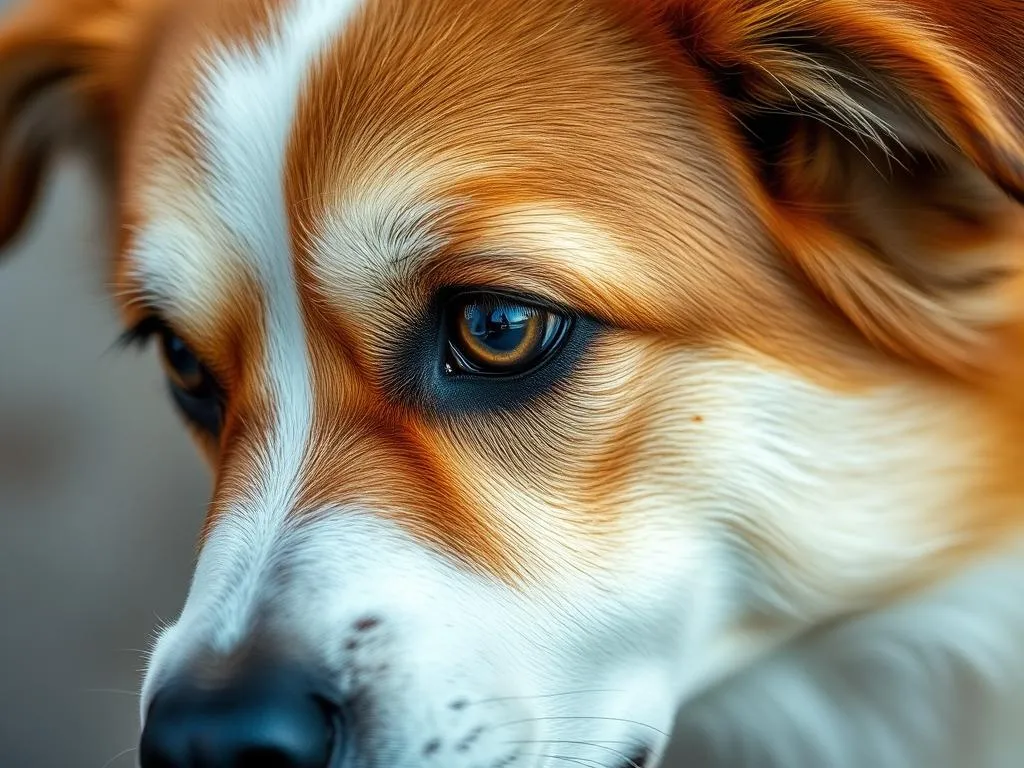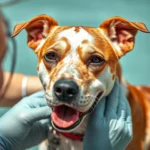
Understanding our furry companions’ health is crucial, especially when it comes to something as seemingly minor as eye boogers. These little bits of eye discharge can tell us a lot about our dog’s health. The term “eye boogers” refers to the discharge that can accumulate in the corners of a dog’s eyes. While they may seem harmless, they can sometimes indicate underlying health issues that need attention.
Understanding Eye Boogers in Dogs
What Are Eye Boogers?
Eye boogers are the result of various secretions produced by the eyes, composed of mucus, tears, and debris. The consistency can vary from watery to thick, and their color can range from clear to yellowish or green. This discharge acts as a protective mechanism, helping to keep the eyes moist and free from irritants.
Comparatively, humans also experience eye discharge, often referred to as “sleep” or “eye crust.” In both cases, the discharge is a natural process; however, the amount and frequency can differ greatly between species.
Normal vs. Abnormal Eye Discharge
It’s essential to distinguish between normal and abnormal eye boogers. Typically, normal discharge is minimal, clear, and doesn’t cause any itching or irritation. However, when the discharge exhibits specific characteristics, it may be a sign of an underlying issue.
Signs of Normal Eye Boogers:
– Clear or slightly cloudy in color
– Small quantity, often seen in the corners of the eyes
– Regular cleaning resolves the issue easily
Signs of Abnormal Eye Discharge:
– Color changes to green or yellow
– Thick and sticky texture
– Increased quantity or frequency
– Accompanied by symptoms such as redness, swelling, or squinting
Common Causes of Eye Boogers
Allergies
Allergies are one of the primary reasons dogs experience eye boogers. Common allergens include pollen, dust mites, mold, and certain foods. When a dog is exposed to these allergens, their immune system may react, leading to inflammation and increased tear production.
Symptoms that often accompany allergic reactions include:
– Itchy eyes
– Sneezing or coughing
– Skin irritations or rashes
Infections
Both bacterial and viral infections can lead to increased eye discharge. Conditions such as conjunctivitis (pink eye) are particularly common and can cause significant discomfort. Signs of infection include:
– Red or swollen eyes
– Excessive tearing
– Discharge that is often yellow or green
– Squinting or pawing at the eyes
Eye Irritants
Various environmental irritants can also lead to eye boogers. Smoke, chemicals, dirt, and even certain grooming products can irritate a dog’s eyes, prompting them to produce more discharge.
Common effects of irritants include:
– Redness
– Excessive tearing
– Squinting or pawing at the eyes
Breed-Specific Factors
Certain dog breeds are more predisposed to developing eye boogers due to their facial structure. Breeds like Bulldogs, Pugs, and Shih Tzus have prominent eyes and shallow eye sockets, making them more susceptible to eye issues. Additionally, genetic factors can play a significant role in predisposition to eye health problems.
When to Be Concerned About Eye Boogers
Signs Your Dog Needs Veterinary Attention
While occasional eye boogers may not be concerning, there are specific signs that indicate it’s time to consult a veterinarian. If you notice:
– Persistent discharge, despite regular cleaning
– Accompanying symptoms like squinting, excessive tearing, or pawing at the eyes
– Changes in behavior, such as reluctance to play or engage
– Any signs of pain or discomfort
It’s essential to seek professional guidance, as these could be signs of a more severe condition that may impact your dog’s vision and overall health.
Diagnostic Procedures
Veterinarians may perform a series of tests to determine the cause of abnormal eye boogers. Common diagnostic procedures include:
– Physical eye examinations to assess the overall health of the eyes
– Tear tests to measure tear production
– Fluorescein staining to check for corneal ulcers or scratches
Early diagnosis is crucial for effective treatment, so don’t hesitate to consult your vet if you notice any concerning symptoms.
Home Care for Eye Boogers
Regular Cleaning
Regularly cleaning your dog’s eyes can help manage eye boogers and maintain eye health. Here’s a simple step-by-step guide for cleaning your dog’s eyes safely:
- Gather your supplies: You’ll need a soft cloth, cotton balls, or specialized eye wipes, and a saline solution or warm water.
- Gently hold your dog’s head steady.
- Moisten the cloth or cotton ball with saline solution.
- Wipe away the discharge, starting from the corner of the eye and moving outward.
- Use a clean cloth or cotton ball for each wipe to avoid spreading bacteria.
Preventive Care
Preventive care is vital for maintaining your dog’s eye health. Here are some strategies:
– Schedule regular veterinary check-ups to monitor eye health.
– Provide a balanced diet rich in omega-3 fatty acids and antioxidants to support eye health.
– Control the environment by reducing allergens and irritants. Regular cleaning of your home can minimize dust and pollen exposure.
Veterinary Treatment Options
Medications
If your dog’s eye boogers are due to an infection or allergies, your vet may prescribe medication. Common types include:
– Antibiotics for bacterial infections
– Antihistamines for allergic reactions
Always follow your veterinarian’s guidance regarding dosage and duration of treatment.
Surgical Options
In severe cases, surgical intervention may be necessary. Conditions such as entropion (a condition where the eyelids roll inward) may require corrective surgery. Post-surgery, your dog will need special care to ensure proper healing, including:
– Administering prescribed medications
– Preventing your dog from scratching or rubbing their eyes
– Regular follow-up appointments with the veterinarian
Conclusion
Monitoring your dog’s eye health, including understanding why they experience eye boogers, is essential for their overall well-being. Regular cleaning, preventive care, and prompt veterinary attention when necessary can help maintain your dog’s eye health and prevent serious issues. Always feel free to consult your veterinarian if you have concerns about your dog’s eyes, as early intervention can lead to better outcomes.
FAQs about Dog Eye Health
Can dogs get eye boogers from allergies?
Yes, dogs can develop eye boogers as a result of allergies to pollen, dust, or certain foods.
Are certain breeds more prone to eye discharge?
Yes, breeds like Bulldogs and Pugs are more prone to eye discharge due to their facial structure and genetic factors.
How often should I clean my dog’s eyes?
You should clean your dog’s eyes as needed, especially if you notice excessive discharge. Regular cleaning can help manage eye boogers.
What home remedies can help with dog eye discharge?
Home remedies like saline solutions can be used for cleaning. However, it’s always best to consult with a veterinarian for persistent issues.
When should I take my dog to the vet for eye issues?
You should take your dog to the vet if you notice persistent discharge, redness, swelling, or any signs of discomfort. Early diagnosis is crucial for effective treatment.









